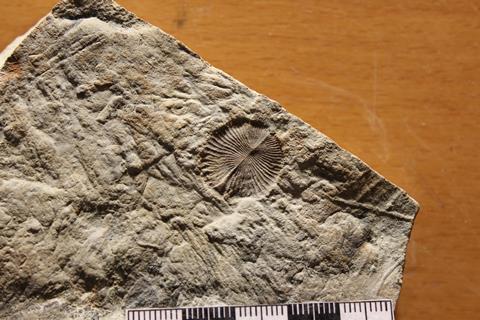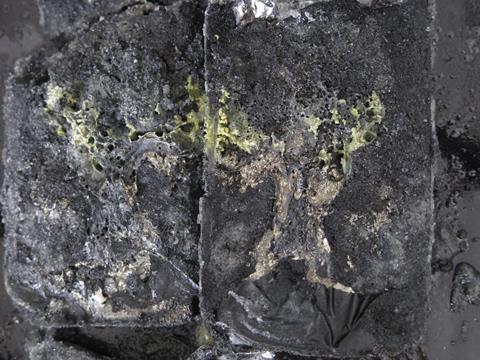
For the first time, researchers have convincingly recreated in the lab the conditions that preserved the enigmatic fossils of the Ediacaran biota – which represent the earliest-known examples of complex multicellular life.
Dating back to between 635–538.8 million years ago, the Ediacaran is often described as a period of evolutionary experimentation, one that occurred before the first appearances of the major branches in the tree of life that we would recognise today. Examples of life from this time include Dickinsonia – a mysterious blob with a quilted body – and the frond-like Charnia.
Beyond their strange forms, what is unusual about the Ediacaran biota is that it is made up of soft-bodied creatures whose fossils have been found all across the globe. This suggests that they weren’t preserved by a fluke of local conditions – as is the case for the soft-bodied fossils of the iconic, younger Burgess Shale – but by something systemic.
While multiple preservation pathways have been proposed for the Ediacaran biota, the leading hypothesis is the pyritic ‘death mask’ model, first proposed by James Gehling in 1999. The idea is that the unique taphonomic processes of the Ediacaran were mediated by the microbial mats that coated the seafloors of this period, before the evolution of burrowing organisms. When the dead Ediacaran creatures were buried by storms, these mats rapidly colonised the overlying sediments, creating anoxic conditions that both slowed decay and allowed bacteria to reduce seawater sulfate to bisulfide, which would in turn react with iron to form pyrite on the external surfaces of the buried organisms. Little is known, however, about the exact chemical constraints on this preservation process.
To investigate further, geobiologist Brandt Gibson of the Vanderbilt University in Tennessee and his colleagues set about creating their own ‘death masks’ in the laboratory by sealing sea anemones and sea slugs in containers with both sand (or varying iron concentrations) and a sulfate-reducing microbial mat.

After 28 days of decay, the team saw that Ediacaran-esque iron sulfide veneers – possible pyrite precursors – had begun to form on the anemone specimens. However, similar veneers had not formed on either the sea slugs or the anemone tentacles, which Gibson attributes to differences in the tissues involved.
The findings, Brandt says, show that a specific iron sulfide mineral like pyrite is not needed to form death masks. ‘This taphonomic pathway is much more pliable than previously thought,’ he adds. ‘Ediacaran fossilisation didn’t need to occur in a “perfect storm” situation.’
At the same time, the researchers explained, the availability of iron alone was not enough to ensure death mask-style preservation, with seawater sulfate, sulfate-reducing microbes and suitable tissue nucleation sites for iron sulfide minerals also playing an important role.
‘It’s really important to understand why these fossils are preserved the way that they are,’ says Sean McMahon, a palaeobiologist from the University of Edinburgh who was not involved in the present study. ‘I think this paper is a step in the right direction.’
He adds: ‘In a way, it’s a bit embarrassing how little palaeontologists understand about how some of our most important fossils formed!’
Gibson explains that the lab-grown death masks were formed using an iron source that is not quite the same as would have been naturally available during the Ediacaran – and so the mineral precursors in the experiments may be different to those associated with genuine fossil specimens.
‘Although it was never our intent, we’re clearly not perfectly replicating Ediacaran taphonomic conditions,’ Gibson says. ‘Ediacaran fossils can preserve beautiful anatomical detail, while our veneer specimens did not replicate finer details – and also just really stunk!’